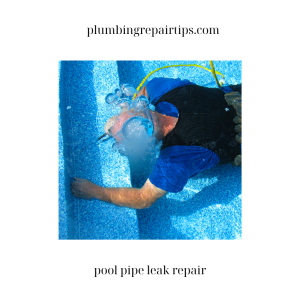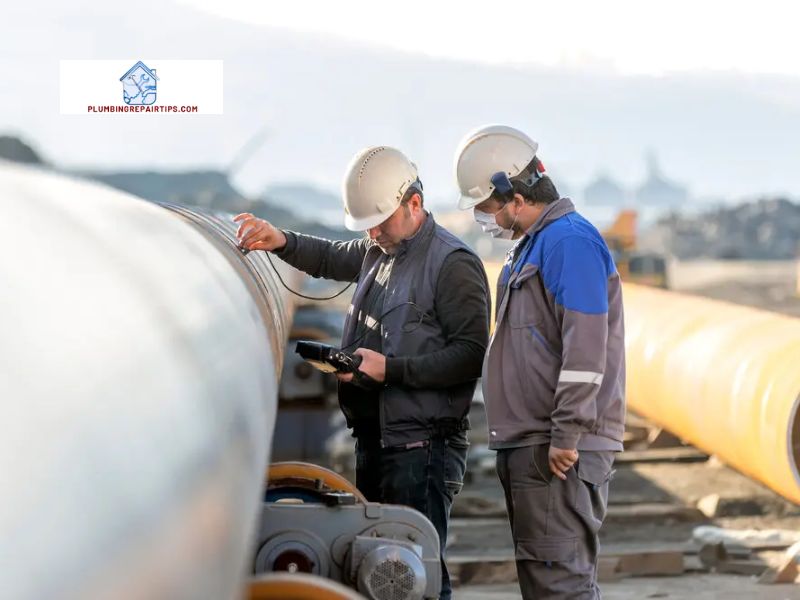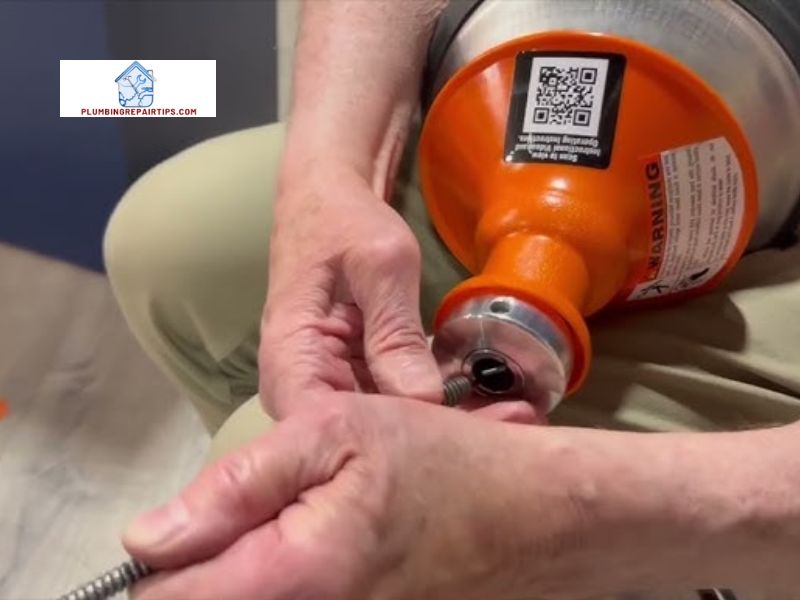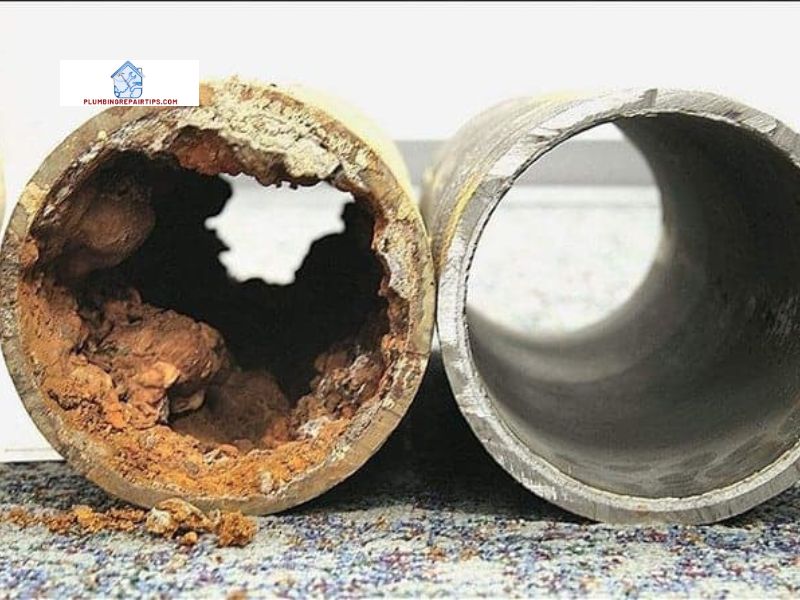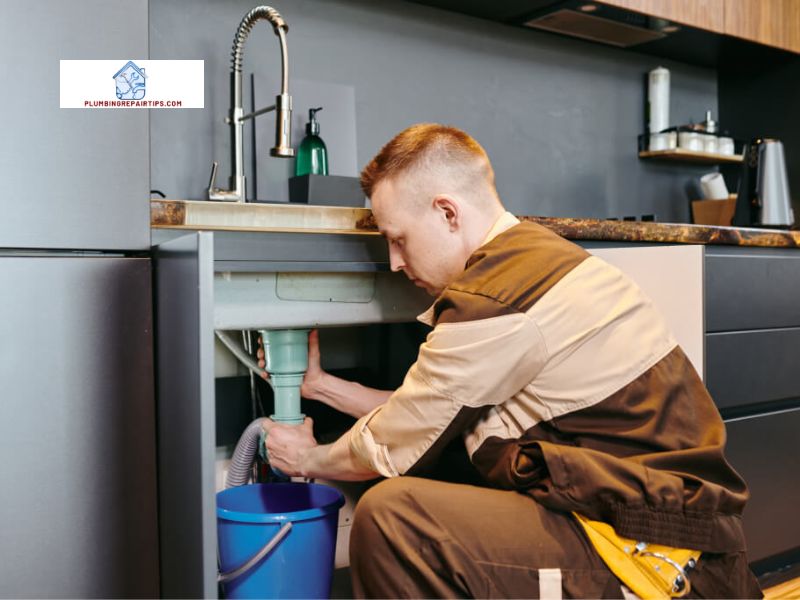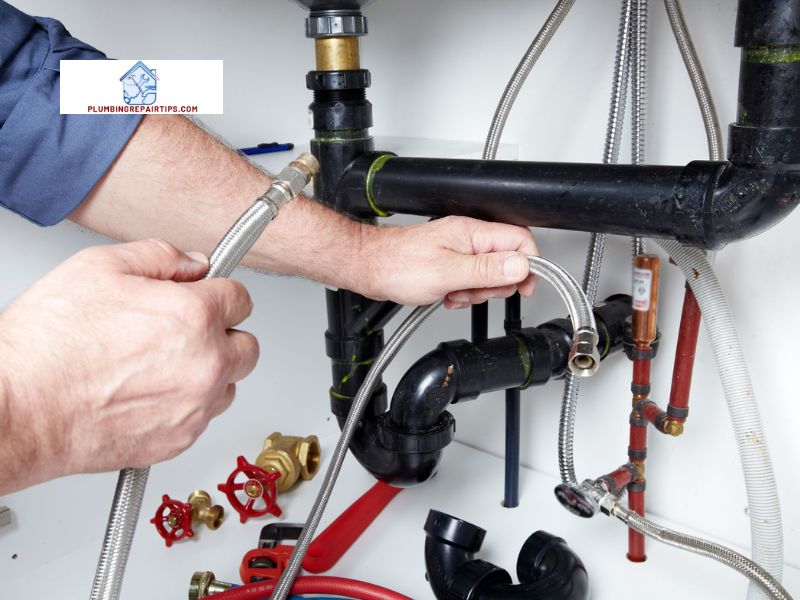Have you ever experienced foul odors or noticed pooling water in your yard? These could be signs of a sewer leak, a major plumbing issue that demands immediate attention. Ignoring such leaks can lead to severe damages, both to your property and your wallet. But worry not, because in this comprehensive guide, plumbingrepairtips.com will unravel the importance of identifying sewer leaks promptly and the crucial role sewer leak detection plays in preventing costly damages.
Detecting sewer leaks at the earliest stage is vital to avoid potential disasters. Imagine the havoc a ruptured sewer line can wreak on your property, causing extensive water damage, mold growth, and even compromising the structural integrity of your home. By identifying these leaks promptly, you can prevent such catastrophic events and save yourself from the hassle and financial burden of extensive repairs.
Sewer leak detection is a specialized process that involves various methods to pinpoint the exact location and extent of the leak. It goes beyond simply identifying the symptoms and delves deep into the root cause. By understanding the underlying issues, you can take immediate action and prevent further deterioration of your sewer system.
But how do you know if you have a sewer leak in the first place? Keep an eye out for foul odors, slow drainage, unexplained increases in water bills, or wet spots in your yard or basement. These telltale signs should not be ignored, as they are your home’s cry for help.
In the upcoming sections, we will explore the different methods of sewer leak detection, the importance of hiring professionals, DIY techniques you can try, and preventive measures to maintain a healthy sewer system. So, fasten your seatbelts as we embark on an enlightening journey to uncover the hidden culprits behind sewer leaks.
Stay tuned for Section 2, where we will delve deeper into the signs and symptoms of sewer leaks. Remember, early detection can save you from significant headaches down the line.
Signs and Symptoms of Sewer Leaks
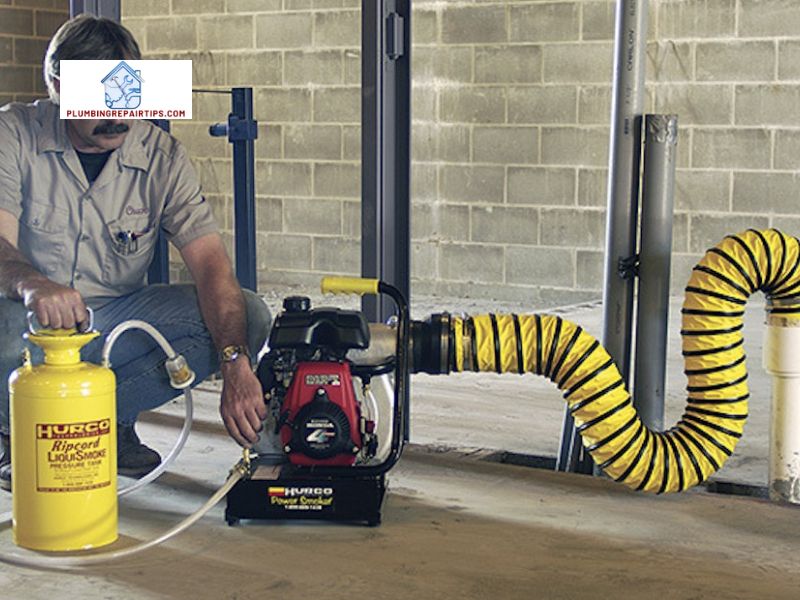
Detecting the Unpleasant: Foul Odors and Unusual Smells
Have you ever caught a whiff of foul odors lingering in and around your property? If so, this could be a telltale sign of a sewer leak. The stench of sewage can permeate through drains, vents, or even seep through cracks in your foundation. Don’t let these unpleasant smells go unnoticed, as they often indicate a hidden problem within your sewer system.
The Slow Drainage Saga: Persistent Clogs and Delays
Are you tired of standing in a pool of water in the shower or dealing with sinks that take forever to drain? Slow drainage is another common symptom of a sewer leak. When there is a leak or blockage in your sewer line, the water flow gets disrupted, resulting in persistent clogs. If you find yourself constantly battling with slow drainage, it’s time to consider the possibility of a sewer leak.
The Sneaky Culprit: Unexplained Increase in Water Bills
Has your water bill suddenly skyrocketed without any apparent reason? If you haven’t experienced any significant changes in your water usage but notice a substantial increase in your bill, it could be an indication of a hidden sewer leak. Leaking sewer lines can cause water to continuously flow, leading to inflated water bills. Don’t let these sneaky culprits drain your wallet unnecessarily.
The Damp Trail: Wet Spots and Pooling Water
Have you noticed wet spots in your yard or pooling water in your basement? These visible signs are strong indicators of a sewer leak. When a sewer line is damaged or compromised, it can cause water to seep into the surrounding soil or accumulate in your basement. If you stumble upon these damp trails, it’s essential to investigate further and address the issue promptly.
In the upcoming sections, we will explore the various methods of sewer leak detection, including visual inspections, smoke testing, video camera inspections, and dye testing. Whether you choose to hire professionals or embark on a DIY adventure, understanding the signs and symptoms of sewer leaks will equip you with the knowledge to take appropriate action. Stay tuned for Section 3, where we will dive into the world of sewer leak detection methods.
Professional Sewer Leak Detection Services
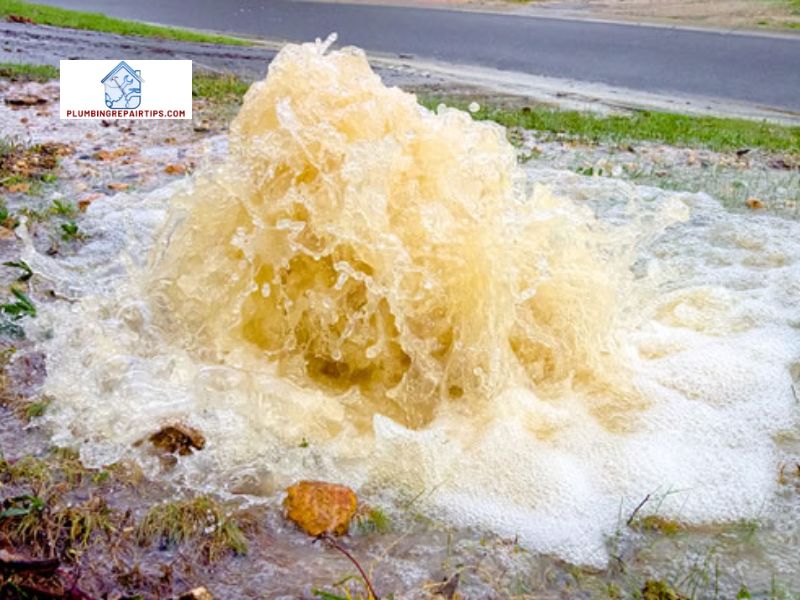
When it comes to identifying and addressing sewer leaks, it’s crucial to rely on the expertise of trained and experienced professionals. While DIY methods may offer temporary solutions, professional sewer leak detection services provide a comprehensive approach that ensures accurate detection and efficient repairs.
Importance of hiring trained and experienced professionals
Sewer systems are complex networks of pipes that require specialized knowledge to navigate. By hiring professionals, you gain access to their in-depth understanding of sewer systems and their ability to identify even the most elusive leaks. These experts have undergone extensive training and possess the necessary skills to handle various types of leaks effectively.
Moreover, professionals are equipped with the latest tools and technologies specifically designed for sewer leak detection. They utilize advanced equipment such as specialized cameras and leak detection devices that can accurately pinpoint the location of leaks, even in hard-to-reach areas. This level of precision is essential in ensuring that repairs are carried out efficiently, minimizing the need for extensive excavation.
Benefits of using specialized equipment for accurate detection
Professional sewer leak detection services employ state-of-the-art equipment that enhances the accuracy of leak detection. For instance, video camera inspections allow experts to visually inspect the interior of sewer lines, identifying leaks, cracks, or blockages. This non-invasive technique provides a thorough assessment without the need for destructive excavation.
Additionally, specialized leak detection devices, such as smoke testing equipment, can detect leaks by introducing non-toxic smoke into the sewer system. Any escaping smoke indicates the presence of a leak or crack. This method is especially effective in identifying hidden leaks and can help professionals determine the severity of the issue.
Overview of professionals’ expertise in identifying and fixing leaks
When you hire professionals for sewer leak detection, you can rest assured that they bring a wealth of expertise to the table. They are well-versed in various types of leaks and their underlying causes, allowing them to provide accurate diagnoses and recommend appropriate solutions. Their experience enables them to identify potential issues that may lead to future leaks, helping you prevent further damage and expenses.
Additionally, professionals are skilled in implementing effective repair strategies, ensuring that the identified leaks are fixed promptly and efficiently. Their expertise extends beyond detection, as they possess the necessary knowledge to carry out repairs using industry-approved methods and materials.
In the upcoming sections, we will explore DIY techniques for sewer leak detection and provide preventive measures to maintain a healthy sewer system. However, it’s important to acknowledge the value of professional services when it comes to ensuring the long-term integrity of your sewer system. Stay tuned for Section 5, where we’ll delve into the world of DIY techniques for sewer leak detection.
DIY Techniques for Sewer Leak Detection
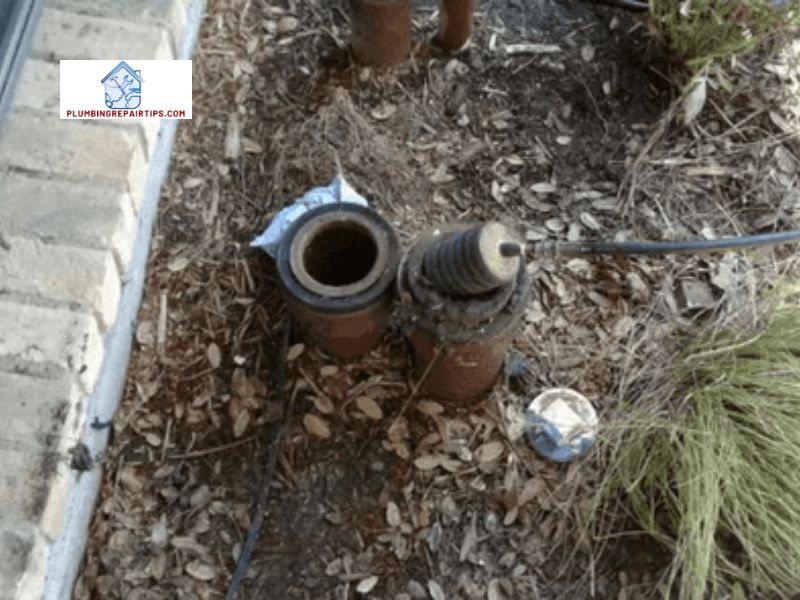
Are you keen on taking matters into your own hands? When it comes to detecting sewer leaks, there are several DIY techniques you can try before calling in the professionals. However, it’s important to note that while these methods can be effective, they may not always provide a comprehensive assessment. Let’s explore some DIY techniques for sewer leak detection that you can attempt at home.
1. Inspecting Sewer Lines Manually
Inspecting your sewer lines manually can be a great starting point in identifying potential leaks. Begin by visually examining the pipes for any visible signs of damage, such as cracks, corrosion, or loose fittings. Pay close attention to joints and connections, as these areas are prone to leaks. Additionally, check for any unusual odors or dampness around the pipes. While this method may not detect all leaks, it can give you a general idea of the condition of your sewer lines.
2. Smoke Testing at Home
Smoke testing is another effective technique that you can perform at home to identify leaks and cracks in your sewer system. By introducing non-toxic smoke into your plumbing system, you can observe if there are any areas where the smoke escapes. Start by blocking all drains and outlets in your home. Then, introduce smoke into the system through a cleanout or vent. If there are any leaks, the smoke will exit through those points, revealing the source of the problem. Remember to follow safety precautions and ensure proper ventilation during the process.
3. Precautions and Safety Measures for DIY Detection
While DIY techniques can be useful, it’s important to prioritize your safety and take necessary precautions. Wear protective gloves and eyewear when inspecting sewer lines to avoid contact with harmful substances or sharp objects. If you’re attempting smoke testing, ensure good ventilation to prevent smoke inhalation. However, keep in mind that these techniques may not provide a comprehensive assessment, and it’s always advisable to seek professional assistance for a thorough inspection.
In the next section, we will discuss preventive measures and maintenance tips to help you maintain a healthy sewer system. Remember, a proactive approach can save you from the headaches of dealing with sewer leaks in the future.
Preventive Measures and Maintenance Tips
Now that we have explored the various methods of sewer leak detection, it’s time to shift our focus toward preventive measures and maintenance tips to ensure a healthy sewer system. By implementing these proactive steps, you can minimize the risk of sewer leaks and maintain the overall integrity of your plumbing infrastructure.
Regular maintenance is key to preventing sewer leaks. Schedule periodic inspections by professionals to assess the condition of your sewer lines. These experts can identify potential issues and address them before they escalate into major leaks. Remember, prevention is always better than cure, especially when it comes to your plumbing.
In addition to professional inspections, there are several steps you can take to maintain a healthy sewer system. Proper waste disposal is crucial. Avoid flushing non-biodegradable items such as wipes, sanitary products, or grease down the toilet or drain. These can clog your pipes and lead to leaks. Instead, dispose of them properly in designated waste bins.
Furthermore, be mindful of what goes down your kitchen sink. Grease and food particles can accumulate in your pipes over time, causing blockages and leaks. To prevent this, use a strainer to catch solids and dispose of grease in a separate container.
Regularly cleaning your drains can also help maintain a healthy sewer system. Use natural drain cleaners or a mixture of vinegar and baking soda to remove any build-up or debris. This simple practice can go a long way in preventing blockages that could lead to leaks.
Lastly, stay vigilant and address any plumbing issues promptly. If you notice slow drainage, strange odors, or any signs of water leakage, don’t delay in taking action. Ignoring these warning signs can result in more severe problems and costly repairs.
By following these preventive measures and maintenance tips, you can significantly reduce the chances of sewer leaks and ensure the longevity of your plumbing system. Remember, a little effort today can save you from a major headache tomorrow.
In conclusion, sewer leak detection is a critical aspect of maintaining a healthy and functional plumbing system. By promptly identifying and addressing leaks, you can protect your property, avoid costly damages, and ensure the well-being of your household. Whether through professional inspections or DIY techniques, make it a priority to stay proactive in maintaining your sewer lines. Remember, prevention is key. So, take the necessary steps to safeguard your plumbing and keep your home free from the woes of sewer leaks.
Thank you for joining us on this informative journey. For more expert plumbing tips and advice, visit plumbingrepairtips.com. Stay leak-free and keep your home flowing smoothly!
